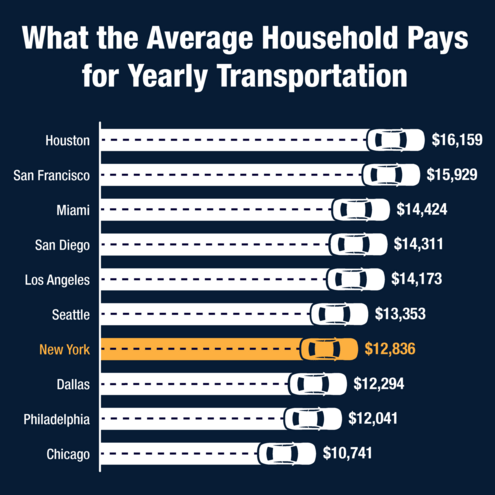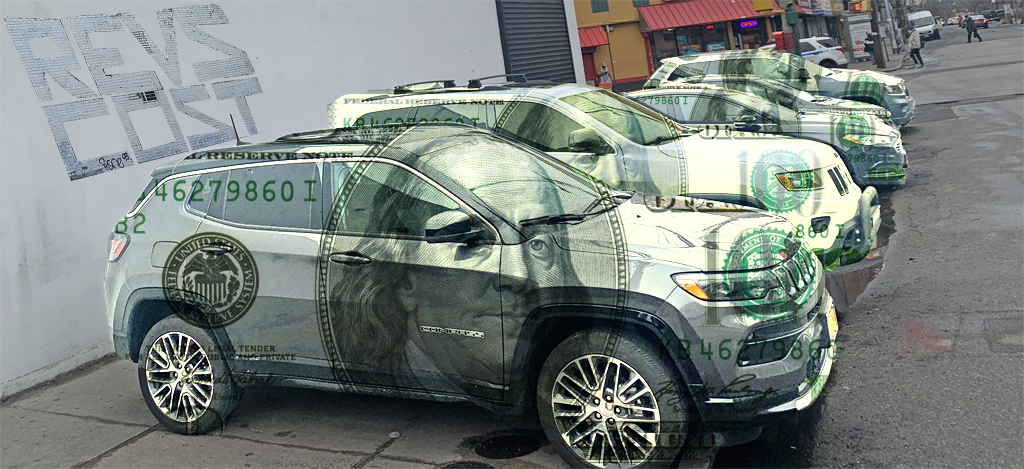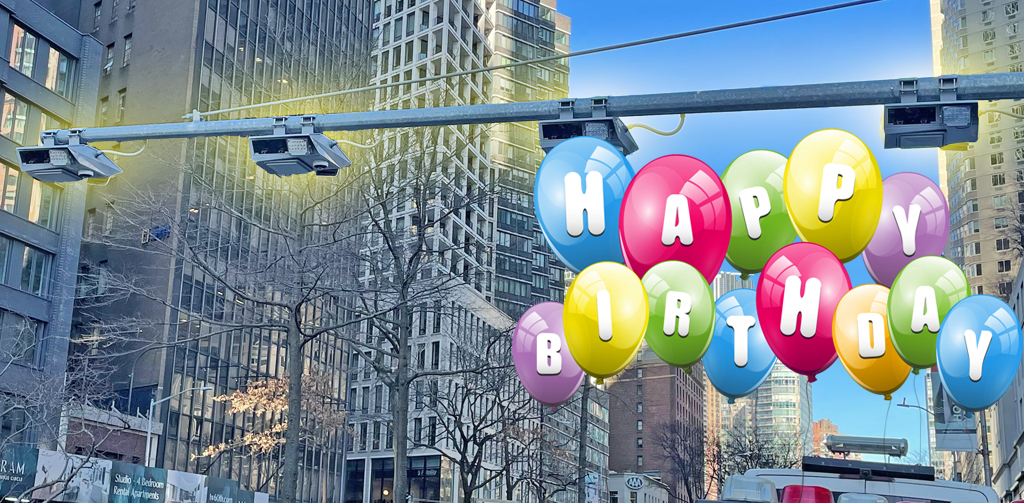They drove themselves to the poor house.
Transportation costs have risen by more than 39 percent for the average household in the New York City metropolitan area since the pandemic — but the main culprit is the fact that more people bought cars, the ultimate economic albatross, a new report from state Comptroller Tom DiNapoli shows.
While transit costs rose 28.7 percent between 2019 and 2023, the cost of buying and fueling a car rose 72 percent during the same period. Gasoline costs weren't the main cause — they're "only" up 30 percent — but the annualized cost of buying a new or used car rose nearly 101 percent, to $4,469 for the average household.
All those cars are not only bad for congestion and the air we breathe, but also for a wage-earner's wallet: A typical household that owns a car spends $10,419 per year in purchasing, fueling and repair costs, while the average transit user spends just $2,412.
DiNapoli's report suggested some optimism that in the future "commuters and travelers realize that parking a car in the city may be difficult or costly and that riding public transit still costs less than owning a car," but also pointed out that rising fares and declining service — both of which are implicated in Gov. Hochul's decision to pause and perhaps kill congestion pricing — are a threat to household budgets.

"Transportation costs do remain elevated for some households, particularly as they struggle to afford other high-cost items, such as housing," he wrote. "It remains critical to maintain MTA service at affordable levels, so that transportation costs remain relatively affordable and offset housing costs, especially for lower- and moderate-income households.
“Efforts should continue to address transit desert neighborhoods," he added. "Making car ownership a necessity comes at a great cost to the households in underserved areas. City and state officials need to keep a close eye on transportation costs to ensure they remain affordable and help to offset higher costs of other household essentials.”
The good news is that in 2023, 48 percent of New York City households relied on public transportation for work, compared to less than 4 percent nationally. That single fact reduces the share of a typical New York City household budget spent on transportation compared to other cities because nationally, 93 percent of the average household’s spending on transportation is car-related, according to the American Public Transportation Association.
But car ownership is rising in New York City. Between 2019 and 2021, the share of households with at least one vehicle in New York City rose from 44.6 percent to 46.1 percent. And the share of households that used public transportation for work has declined in every borough since 2013. Brooklyn experienced the largest drop since 2019 down to roughly 52 percent, a drop of 9 percent.
Still, New York's reliance on transit is a national cost-cutting example:

That said, without congestion pricing or proper funding of transit, that little orange car could race right past other cities.
"The uncertainty on funding for the MTA's capital plans that has come from the pause on congestion pricing has the potential to lead to deterioration of service, and perhaps greater dependence on motor vehicles," DiNapoli told Streetsblog. This comes at a time when encouraging increased public transit ridership is a key goal for the MTA’s long-term sustainability."






